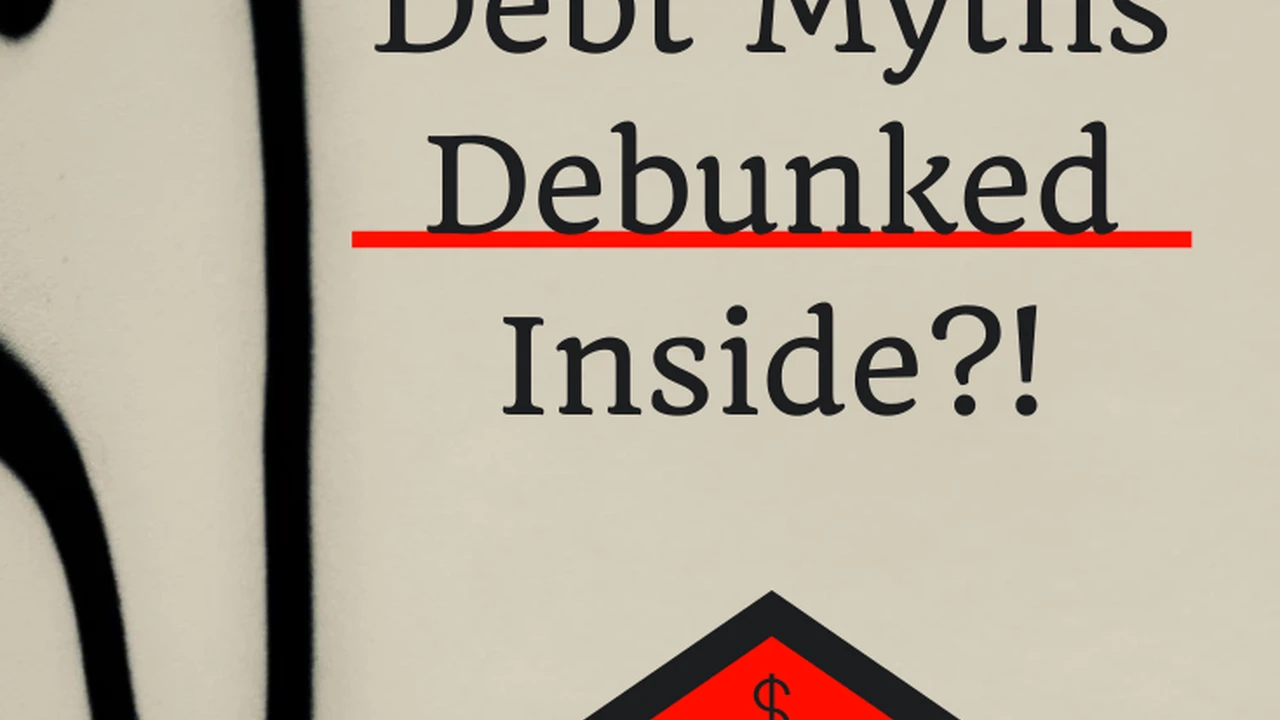5 Steps to Successfully Negotiate with the IRS for Debt Relief
Learn 5 essential steps for successful negotiation with the IRS to achieve favorable tax debt relief outcomes.

Learn 5 essential steps for successful negotiation with the IRS to achieve favorable tax debt relief outcomes. Facing tax debt can feel overwhelming, but the good news is that the IRS often has programs designed to help taxpayers resolve their outstanding balances. The key is knowing how to approach them and what steps to take. This guide will walk you through five crucial steps to successfully negotiate with the IRS for debt relief, helping you navigate the process with confidence.
5 Steps to Successfully Negotiate with the IRS for Debt Relief
Understanding Your IRS Tax Debt Situation Before Negotiation
Before you even think about picking up the phone or sending a letter to the IRS, you need to have a crystal-clear understanding of your current tax debt situation. This isn't just about knowing the total amount you owe; it's about digging into the details. What tax years are involved? What types of taxes are outstanding – income tax, payroll tax, self-employment tax? Are there penalties and interest accumulating? Knowing these specifics will be your foundation for any negotiation. You can usually find this information by reviewing past IRS notices, checking your IRS online account, or requesting your tax transcripts. The IRS offers various ways to access your account information, including their 'Get Your Tax Record' tool online. It's also crucial to understand why you owe the debt. Was it due to an unexpected life event, a business downturn, or simply a misunderstanding of tax laws? Having this context will help you explain your situation to the IRS and build a more compelling case for relief. Don't forget to gather all relevant financial documents, including bank statements, pay stubs, expense records, and any other proof of income and expenditures. The more prepared you are, the stronger your position will be.Step 1: Gather All Financial Documentation for IRS Negotiation
This step is non-negotiable. The IRS isn't going to take your word for it when it comes to your financial hardship. They want to see the numbers, and they want to see them clearly. Think of yourself as building a financial narrative that demonstrates why you can't pay your tax debt in full or on time. You'll need to collect a comprehensive set of documents, typically including:- Proof of Income: Pay stubs, W-2s, 1099s, business profit and loss statements, social security statements, unemployment benefits, etc.
- Bank Statements: For all checking and savings accounts, usually for the past 3-6 months.
- Investment Account Statements: If applicable, showing current balances.
- Expense Records: Utility bills, rent/mortgage statements, car payments, insurance premiums, medical bills, credit card statements, student loan statements, food expenses, transportation costs, etc. Be prepared to justify any unusually high expenses.
- Asset Information: Details on any real estate you own (property value, mortgage balance), vehicles (make, model, year, loan balance), and other significant assets.
- Prior Tax Returns: Copies of your filed tax returns for the years in question and potentially the most recent few years.
- IRS Notices: Any letters or notices you've received from the IRS regarding your tax debt.
Step 2: Understand IRS Debt Relief Options and Eligibility Criteria
Before you propose a solution, you need to know what solutions the IRS offers. There isn't a one-size-fits-all approach to tax debt relief. The IRS has several programs, each with its own eligibility requirements and benefits. Familiarizing yourself with these options will empower you to suggest the most appropriate one for your situation. Here are the main ones:Offer in Compromise (OIC) for Significant Tax Debt Reduction
An Offer in Compromise (OIC) allows certain taxpayers to resolve their tax liability with the IRS for a lower amount than what they originally owe. The IRS considers an OIC if they believe you cannot pay your full tax liability or if there's doubt as to the collectibility of the debt. They look at your ability to pay, your income, expenses, and asset equity. An OIC is generally for taxpayers who are experiencing significant financial hardship. It's a complex process, and the IRS will scrutinize your financial situation very closely. You'll typically need to submit Form 656, Offer in Compromise, along with a detailed financial statement (Form 433-A (OIC) for individuals or 433-B (OIC) for businesses). The IRS will calculate your 'Reasonable Collection Potential' (RCP) to determine if they will accept your offer. This is often the most sought-after option because it can significantly reduce the amount owed, but it's also one of the hardest to qualify for.Installment Agreement for Manageable Monthly Payments
An Installment Agreement (IA) allows you to make monthly payments over a period of up to 72 months (6 years). This is a much more common and accessible option than an OIC. If you owe $50,000 or less in combined tax, penalties, and interest, and you've filed all required tax returns, you can usually set up a 'Guaranteed Installment Agreement' or a 'Streamlined Installment Agreement' online or over the phone without extensive financial disclosure. For larger amounts or more complex situations, you might need to provide financial information, but it's still generally less stringent than an OIC. Interest and penalties continue to accrue with an IA, but at a reduced rate. This option is ideal if you can afford to pay off your debt over time but need a structured payment plan.Currently Not Collectible (CNC) Status for Extreme Hardship
If the IRS determines that you cannot pay any of your tax debt due to extreme financial hardship, they may place your account in Currently Not Collectible (CNC) status. This means the IRS agrees that you don't have the ability to pay at the moment, and they will temporarily stop collection efforts. However, interest and penalties will continue to accrue, and the IRS will periodically review your financial situation to see if your ability to pay has improved. CNC status is not a permanent solution, but it can provide much-needed breathing room during a difficult period. To qualify, you'll need to provide extensive financial documentation demonstrating that paying your tax debt would leave you unable to meet basic living expenses.Penalty Abatement for Reasonable Cause
The IRS can abate (remove) certain penalties if you can show 'reasonable cause' for not meeting your tax obligations. This often applies to penalties for failure to file, failure to pay, or failure to deposit. Reasonable cause can include things like serious illness, natural disaster, death in the family, or incorrect advice from a tax professional. The IRS also offers 'First Time Abatement' (FTA) for taxpayers who have a clean compliance history for the past three years. While not directly reducing the principal tax debt, penalty abatement can significantly lower your overall balance, making it more manageable. You'll typically request this by writing a letter to the IRS or using Form 843, Claim for Refund and Request for Abatement.Other Options: Innocent Spouse Relief and Bankruptcy
In specific situations, you might qualify for Innocent Spouse Relief if your spouse or former spouse is solely responsible for an understatement of tax on a joint return. In extreme cases, bankruptcy might be an option, but it's a complex legal process with significant implications and should only be considered after consulting with a bankruptcy attorney. Generally, only certain types of tax debt are dischargeable in bankruptcy, and there are strict rules regarding the age of the tax debt.Step 3: Contact the IRS and Present Your Case Clearly
Once you've gathered your documents and understand your options, it's time to contact the IRS. This can be done by phone, mail, or through a tax professional. When you communicate with the IRS, whether verbally or in writing, clarity and professionalism are paramount. Be prepared to explain your financial situation concisely and honestly. If you're calling, have all your documents in front of you. If you're writing, ensure your letter is well-organized and includes all necessary forms and supporting documentation.Communicating Effectively with IRS Representatives
When speaking with an IRS representative, remember they are often just doing their job. Be polite, but firm. Clearly state your purpose for calling – that you want to resolve your tax debt. Be ready to answer questions about your income, expenses, and assets. If you're proposing a specific solution, like an Installment Agreement or an Offer in Compromise, explain why you believe it's the best fit for your situation, backed by your financial data. Take detailed notes of every conversation: the date, time, the representative's name and badge number, and a summary of what was discussed and agreed upon. This record can be invaluable if there are any discrepancies later.Submitting Forms and Documentation for IRS Review
For most relief options, you'll need to submit specific IRS forms along with your supporting documentation. For an OIC, this means Form 656 and Form 433-A (OIC). For an Installment Agreement, you might use Form 9465, Installment Agreement Request, or set it up online. Always make copies of everything you send to the IRS. If mailing, consider using certified mail with a return receipt requested, so you have proof of delivery. The IRS will review your submission and may request additional information or clarification. Respond promptly to any requests to keep the process moving forward.Step 4: Negotiate and Be Prepared to Compromise with the IRS
Negotiation with the IRS is often a back-and-forth process. Don't expect them to immediately accept your first proposal, especially for an Offer in Compromise. They might counter with a different payment amount or a different type of agreement. This is where your preparation and understanding of your financial limits come into play. Be realistic about what you can afford, but also be prepared to justify your position.Understanding IRS Counter-Offers and Your Options
The IRS might propose a higher monthly payment for an Installment Agreement than you initially suggested, or they might reject your OIC and suggest an IA instead. Carefully evaluate any counter-offer. Does it fit within your budget? Is it a sustainable solution? If not, you can explain why and propose an alternative. For example, if they propose a payment that's too high, you might need to re-emphasize your essential living expenses and how that payment would create further hardship. Remember, the goal is a resolution that works for both you and the IRS.When to Seek Professional Help for IRS Negotiations
While you can negotiate with the IRS yourself, many taxpayers find the process complex and stressful. This is where a qualified tax professional can be invaluable. An Enrolled Agent (EA), Certified Public Accountant (CPA), or tax attorney specializing in tax controversy can represent you before the IRS. They understand the tax laws, the IRS's internal procedures, and how to effectively present your case. They can also handle all communication with the IRS, saving you time and stress. If your tax debt is substantial, your financial situation is complicated, or you feel overwhelmed, hiring a professional is often a wise investment. They can help you prepare the necessary forms, negotiate on your behalf, and ensure you pursue the best possible outcome.Step 5: Follow Through on Your Agreement and Stay Compliant
Congratulations! You've successfully negotiated a tax debt relief agreement with the IRS. But the work isn't over. The final and perhaps most crucial step is to diligently follow through on your agreement and ensure future tax compliance. Failing to do so can cause your agreement to default, potentially putting you back in a worse position than before.Making Timely Payments and Adhering to Terms
If you've entered into an Installment Agreement or an accepted Offer in Compromise, make sure you make all your payments on time. Set up automatic payments if possible to avoid missing deadlines. Understand all the terms of your agreement. For an OIC, this might include a probationary period where you must remain compliant. For an IA, it means making consistent monthly payments. If you anticipate any difficulty in making a payment, contact the IRS immediately to discuss your options. Don't wait until you've missed a payment.Maintaining Future Tax Compliance to Avoid New Debt
One of the most critical aspects of any IRS debt relief agreement is the requirement to remain compliant with all future tax obligations. This means:- Filing all required tax returns on time: Even if you can't pay, file your returns.
- Paying all current taxes: This includes estimated taxes for self-employed individuals or ensuring proper withholding from your paycheck.
- Responding to all IRS notices: Don't ignore any correspondence from the IRS.
:max_bytes(150000):strip_icc()/277019-baked-pork-chops-with-cream-of-mushroom-soup-DDMFS-beauty-4x3-BG-7505-5762b731cf30447d9cbbbbbf387beafa.jpg)






